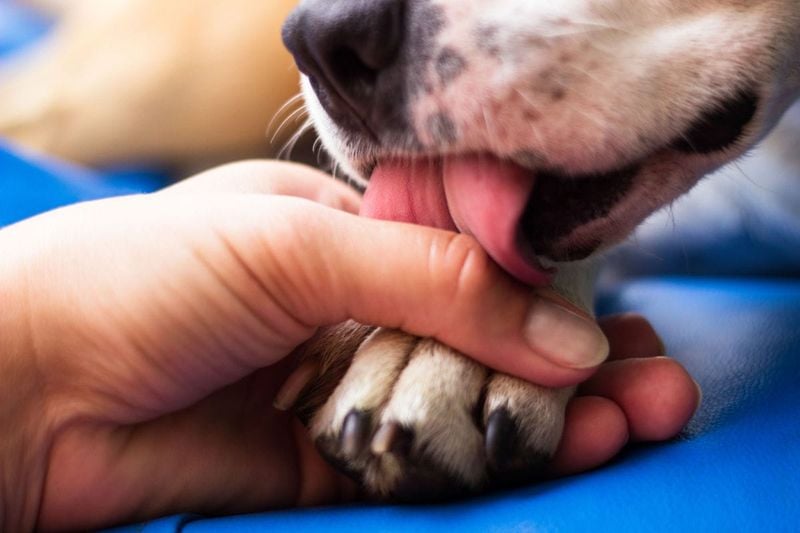7 Dog Allergies Every Pet Parent Should Know—And How to Treat Them
Dogs, like humans, can suffer from a variety of allergies that cause discomfort, irritation, and even more serious health issues if left untreated. Whether it’s nonstop scratching, chronic ear infections, or unexplained digestive troubles, allergic reactions in dogs are more common than many pet owners realize—and they can manifest in surprising ways.
What makes dog allergies tricky is that the symptoms often overlap with other conditions. A persistent itch might not be from fleas, but rather a reaction to something in your dog’s food or even the environment. From seasonal allergens like pollen to everyday triggers like dust mites or certain proteins in kibble, the sources are wide-ranging—and so are the treatments.
Being aware of the most common allergies in dogs gives you a head start in spotting the signs early and taking action. Whether your pup is sneezing, licking their paws constantly, or just not acting like themselves, it could be more than a bad day—it could be an allergy.
In this guide, we break down 7 of the most common types of allergies in dogs and explain how to manage them effectively, from prevention strategies to vet-approved treatments. Understanding these triggers not only helps your pet feel better but can also prevent minor reactions from turning into major health problems down the line.
Let’s take a closer look at what might be bothering your best friend—and how you can help.
1. Flea Allergy Dermatitis (FAD): When Tiny Bites Cause Big Problems
Just one flea bite can trigger weeks of misery for dogs with FAD. The allergic reaction comes from flea saliva, not the actual bugs themselves. Your pup might chew frantically at their tail base or have red, bumpy skin that’s hot to touch.
Treatment requires a two-pronged approach. First, eliminate all fleas with vet-approved medications that kill adult fleas and prevent eggs from developing. Second, soothe your dog’s irritated skin with medicated shampoos or anti-inflammatory medications from your vet.
Prevention is your best strategy—keep your dog on year-round flea control, even during winter months when you think fleas aren’t active.
2. Environmental Allergies: When the Outdoors Becomes the Enemy
Pollen, grass, and trees might seem harmless, but they’re common triggers for canine atopy. Unlike seasonal allergies in humans, dogs show their discomfort through excessive scratching, licking paws, rubbing faces against furniture, or developing ear infections.
Managing environmental allergies starts with identifying triggers through veterinary testing. Daily wiping down your dog after outdoor adventures removes allergens from their coat. Air purifiers and frequent vacuuming help create a cleaner home environment.
For severe cases, your vet might recommend antihistamines, special medicated shampoos, or immunotherapy shots that gradually desensitize your dog to specific allergens.
3. Food Allergies: When Dinner Becomes Dangerous
Chicken, beef, dairy, and wheat top the list of ingredients that can trigger allergic reactions in sensitive dogs. The tricky part? Food allergies often develop after years of eating the same diet without problems.
Symptoms include chronic ear infections, gastrointestinal upset, and itchy skin that doesn’t respond to typical allergy treatments. Unlike humans who might experience immediate reactions, dogs usually show delayed symptoms making diagnosis challenging.
The gold standard treatment is an elimination diet supervised by your veterinarian. This involves feeding a novel protein source your dog has never eaten before, then gradually reintroducing foods to identify the culprit.
4. Contact Allergies: When Touching Hurts
Household cleaners, lawn chemicals, and even plastic food bowls can spark contact allergies in sensitive pups. These reactions typically appear where the skin meets the irritant—think belly rashes after lying on treated grass or chin irritation from plastic dishes.
Switching to stainless steel or ceramic bowls often solves mealtime reactions. For floor cleaner sensitivities, rinse floors thoroughly after cleaning or try pet-safe alternatives like vinegar solutions. Protective booties can shield paws from outdoor irritants.
Identifying the offending substance requires detective work. Keep a log of when symptoms appear and what your dog contacted before the reaction for clues.
5. Inhalant Allergies: When Breathing Becomes Bothersome
Sneezing, watery eyes, and runny noses aren’t just human problems—dogs get hay fever too! Canine inhalant allergies happen when airborne particles like pollen, mold spores, or dust trigger an immune response. Some dogs even develop asthma-like symptoms with wheezing or increased respiratory effort.
Morning walks might need rescheduling during high pollen seasons. Consider tracking local pollen counts and limiting outdoor time when levels peak. HEPA filters in your home can trap microscopic allergens before they reach sensitive noses.
Your vet might prescribe antihistamines or steroids for severe cases. Regular bathing with hypoallergenic shampoo helps remove allergens from your dog’s coat before they cause problems.
6. Mold and Dust Mite Allergies: The Hidden Household Hazards
The culprits behind these allergies lurk in damp basements, dusty dog beds, and rarely cleaned corners. Dogs with mold or dust mite sensitivities often show year-round symptoms that worsen in humid weather or after spending time in problem areas of your home.
Washing dog bedding weekly in hot water eliminates dust mites and their waste—a major trigger for sensitive pups. Dehumidifiers help control moisture that promotes mold growth. Regular dusting and vacuuming with HEPA-filtered machines reduces environmental triggers.
Veterinary-prescribed medications provide relief while you tackle the underlying household issues. Some dogs benefit from allergy shots specifically formulated for dust mite sensitivities.
7. Drug Allergies: When Medicine Makes Matters Worse
Antibiotics like penicillin and sulfa drugs top the list of medications that can trigger allergic reactions in dogs. Symptoms range from mild hives to life-threatening anaphylaxis requiring emergency care. Some reactions appear immediately, while others develop days after starting treatment.
Always monitor your dog closely when starting new medications. Watch for excessive scratching, facial swelling, vomiting, or difficulty breathing—all potential signs of an allergic response. Keep a record of any medications that cause reactions in your pet’s medical history.
If you suspect a drug allergy, contact your vet immediately and never reuse medications that previously caused problems. Veterinarians can prescribe alternative medications when your dog has known drug sensitivities.













